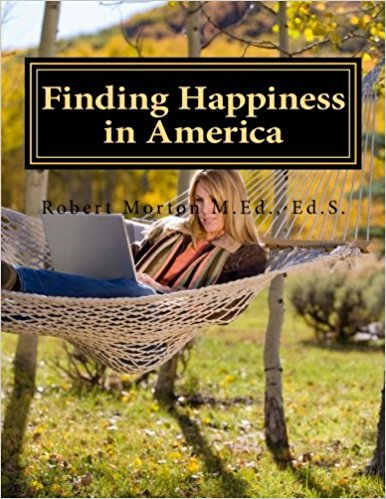Contact us on the Secure Bpath Mail Form.
Three (3) ways to find an article:
(1) The quickest way is to go to TOPIC SEARCH in the upper right margin and type in your topic. All relevant posts will appear at the top.
(2) Or, go to the top of the right margin to ARCHIVES where each topic is arranged by date.
(3) Surf through the Table of Contents below & "click HERE". Your article of interest appears at the top.
Three (3) ways to find an article:
(1) The quickest way is to go to TOPIC SEARCH in the upper right margin and type in your topic. All relevant posts will appear at the top.
(2) Or, go to the top of the right margin to ARCHIVES where each topic is arranged by date.
(3) Surf through the Table of Contents below & "click HERE". Your article of interest appears at the top.
TABLE OF CONTENTS
- MONTESSORI EDUCATION TURNS KIDS ON TO LEARNING (click HERE)
- (A-41) UNRESTRICTED TV VIEWING HARMS OUR CHILDREN (click HERE)
- (A-40) SMALLER CLASSROOM SIZE BENEFITS ALL, ESPECIALLY LOW-INCOME BLACK STUDENTS (click HERE)
- (A-39) WRITE A PERSONAL MISSION STATMENT WITH YOUR THOUGHTS IN MIND! (click HERE)
- (A-38) WHEN MIDLIFE CRISIS COLLIDES WITH MALE MENOPAUSE (click HERE)
- (A-37) ADHD DIAGNOSIS AT AGE 4 (click HERE)
- (A-36) LET THE HOMEWORK WARS BEGIN! (click HERE)
- (A-35) DOES YOUR CHILD SUFFER FROM NATURE DEFICIT DISORDER? (click HERE)
- (A-34) CHILDHOOD TEACHINGS CARRY INTO ADULTHOOD (click HERE)
- (A-32) FAMILY "BLACK SHEEP" IS UNIQUE CHAMPION! (click HERE)
- (A-31) FAMILIES WITH HANDICAPPED KIDS FACE MANY HURDLES (click HERE)
- (A-30) NEW CONCEPT MAKES 4-YEAR COLLEGE DEGREE AFFORDABLE & HIGH QUALITY (click HERE)
- (A-29)MONTESSORI LEARNING MAKES LEARNING FUN (click HERE)
- (A-28) 51 EXCELLENT FREE WEBSITES TO TEACH YOUNG CHILDREN ACADEMIC SKILLS (click HERE)
- (A-27) JOB PROMOTION VS BALANCING WORK AND LIFE (click HERE)
- (A-26) TEENS WORKING AFTER SCHOOL: GOOD OR BAD IDEA? (click HERE)
- (A-25) MANY GRANDPARENTS PROVIDE THAT SPECIAL BOND...FROM AFAR (click HERE)
- (A-24) TEACH THE ALPHABET THE OLD FASHIONED WAY (click HERE)
- (A-23) SHED YOUR NEGATIVE THOUGHTS (click HERE)
- (A-22) ENCOURAGING SHY CHILDREN TO MAKE FRIENDS (click HERE)
- (A-21) A NEW TWIST IN SCHOOL VIOLENCE (click HERE)
- (A-20) CHILDREN "LOCKED INTO" SEEKING UNDUE ATTENTION (click HERE)
- (A-19) OUR CHILDREN ARE GROWING UP TOO FAST! (click HERE)
- (A-18) POSITIVE HOME ATMOSPHERE CAN BOLSTER CHILD'S SELF- ESTEEM (cLick HERE)
- (A-17) TERRIBLE TWO'S CAN BE TERRIBLE, IN DEED! (click HERE)
- (A-16) VOLUNTEER AT YOUR CHILD'S SCHOOL (click HERE)
- (A-15) BABY STEPS APPROACH BEST TO QUIT BAD HABITS (click HERE)
- (A-14) SOME "FRIENDSHIPS" SHOULD BE TERMINATED (click HERE)
- (A-13) IS YOUR TEEN A BINGE DRINKER? (click HERE)
- (A-12) JOB PROMOTIONS ELUDE MANY ADULT PROBLEM READERS (click HERE)
- (A-11) TEEN LOW SELF-ESTEEM COULD HAVE LIFE-LONG CONSEQUENCES (click HERE)
- (A-9) UNDIAGNOSED ADULT ADHD LEADS TO FRUSTRATION (click HERE)
- (A-8) FREELANCE WRITING CAN BE GOOD AT-HOME BUSINESS (click HERE)
- (A-7) CHILDREN FEEL THE RECESSION, TOO (click HERE)
- (A-6) PRETTY POISONS SHOULD CONCERN PARENTS (click HERE)
- (A-5) TOO MUCH TV HARMS CHILDREN (click HERE)
- (A-4) PARENTS SHOULD WORRY ABOUT MERCURY TOXIN (click HERE)
- (A-3) SHOULD HIGH SCHOOLS HAVE LATER STARTING TIMES? (click HERE)
- (A-2) DEVELOPMENTALLY DELAYED CHILDREN NEED POSITIVE PARENTS (click HERE)
- (A-1) POWERFUL DADS READ BEDTIME STORIES & KISS "OUCHIES" (click HERE)
- (Z) DOESPERFECTIONISTIC PARENTING MORE HARM THAN GOOD (click HERE)
- (Y) CHILDREN NEED UNCONDITIONAL LOVE (click HERE)
- (X) GOOD HABITS CAN BECOME AS ADDICTIVE AS
- BAD ONES (click HERE)
- (W) VIOLENCE-PRONE CHILDREN GROWING PROBLEM (click HERE)
- (V) TOP-QUALITY PRESCHOOL EDUCATIONAL SITES ONLINE FREE OF CHARGE (click HERE)
- (U) OLDER FIRST TIME FATHERS HAVE AN ADVANTAGE (click HERE)
- (T) NEGATIVE THOUGHTS- REBEL AGAINST THEM! (click HERE)
(S) HAPPY PEOPLE BECOME WHAT THEY THINK ABOUT (click HERE)
- (R) LEARNING AID PRODUCTS (click HERE)
- (Q) TEEN SPENDING HABITS (click HERE)
- (P) ADVICE FOR DISCOURAGED SALESPERSONS (click HERE)
- (O) LEFT-HANDED CHILDREN HAVE THEIR SHARE OF TALENTS (click HERE)
 (N) MEDICAL INPUT HELPS DIAGNOSE LEARNING DIFFICULTIES (click HERE)
(N) MEDICAL INPUT HELPS DIAGNOSE LEARNING DIFFICULTIES (click HERE)- (M) UNDERACHIEVING STUDENTS FRUSTRATE PARENTS (click HERE)
- (L) PROTECT YOUR CHILDREN FROM ENVIRONMENTAL TOXINS! NEW STUDY LINKS ADHD TO PESTICIDE (click HERE)
- (K) GRANDPARENTING FROM AFAR (click HERE)
- (J) IS YOUR CHILD BULLIED? (click HERE)
- (IX) GREAT CHILD-FRIENDLY WEBSITES! (click HERE)
- (I) BUSINESS OWNERS WANT TO DESTRESS THEIR LIVES (click HERE)
- (H) TAKING RISKS NECESSARY FOR GROWTH (click HERE)
- (G) LATCHKEY KIDS IN SINGLE PARENT HOMES ON RISE (click HERE)
- (F) NEW! CHILD GROWTH & DEVELOPMENT (click HERE)
- (E) NEW! 23 TELL-TALE SIGNS OF TEEN INVOLVEMENT IN THE DRUG SCENE (click HERE)
- (C) RESEARCH ON LETTER/NUMBER REVERSALS AND WRITING DIFFICULTIES (NOTE: There's no main posting, but scroll down the right margin for excellent videos, etc. under code "C")
- (B) UNLOCKING THE DOOR TO SUCCESSFUL "LATCHKEY KID" PARENTING (click HERE)
- (A) STRATEGIES FOR PARENTS TO TEACH KIDS ABOUT MONEY MANAGEMENT (click HERE)
- I BENEFITS OF LAUGHTER, STRESS REDUCTION & MANAGEMENT (click HERE)
- II. NATIONAL CHILDREN'S MENTAL HEALTH AWARENESS DAY- MAY 7TH (click HERE)
- III. OVER-MEDICATED CHILDREN (click HERE)
- IV. ADULTS WITH DYSLEXIA (click HERE)
- V. SCHOOL HOMEWORK: THE EVERLASTING PARENT/CHILD BATTLEGROUND (click HERE)
- VI. ALCOHOL ABUSE RESEARCH AND SELF-ASSESSMENT OF YOUR RELATIONSHIP WITH ALCOHOL (click HERE)
- VII. COLLEGE STUDENTS WITH LEARNING DIFFICULTIES (click HERE)
- VIII. KIDS AND GUNS (click HERE)
- IX. TOO MUCH TV VIEWING HARMFUL TO KIDS (click HERE)













